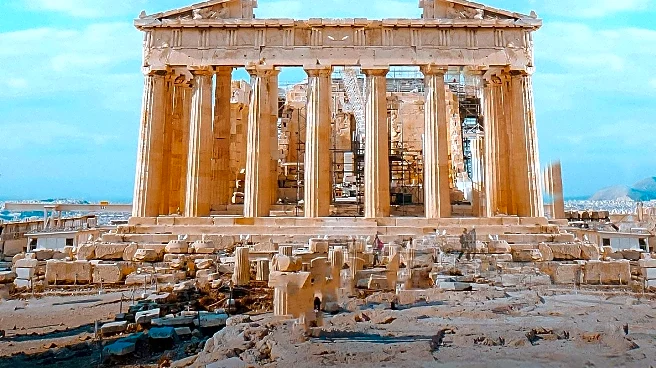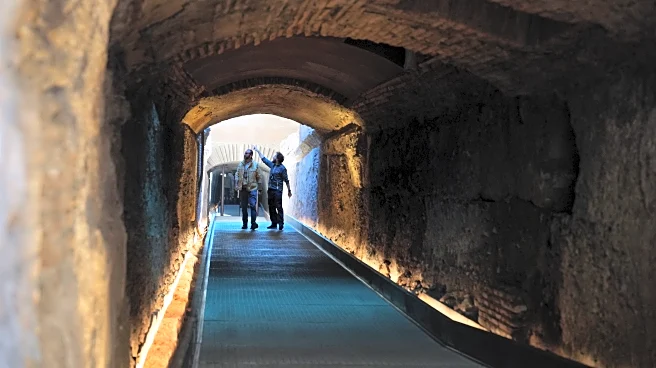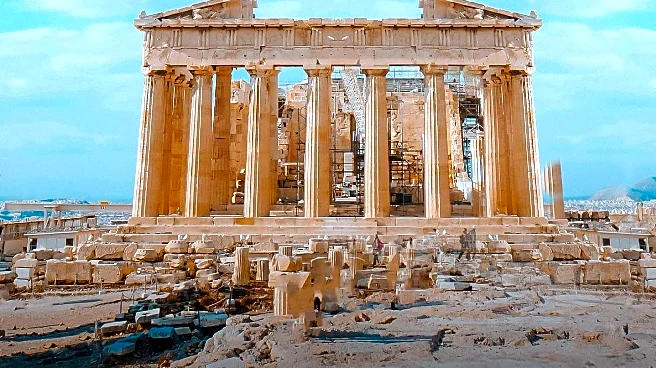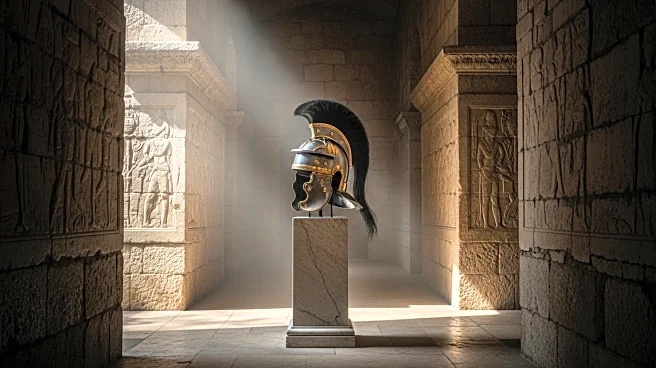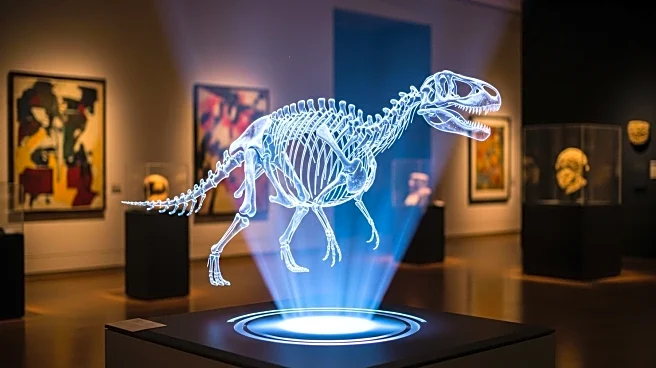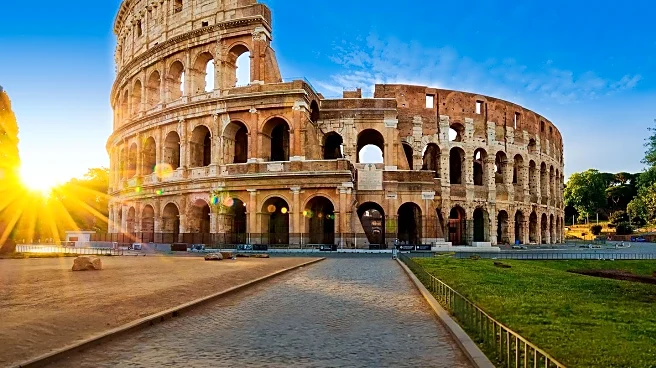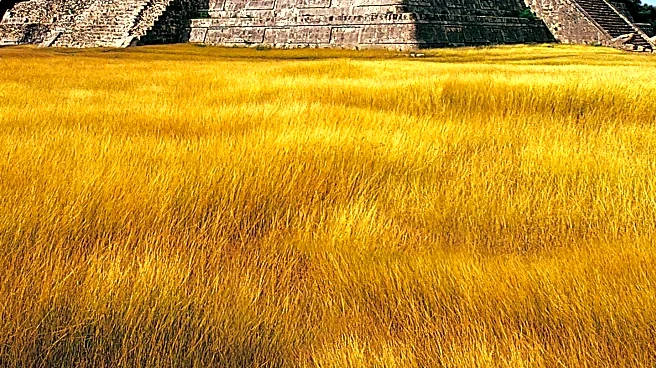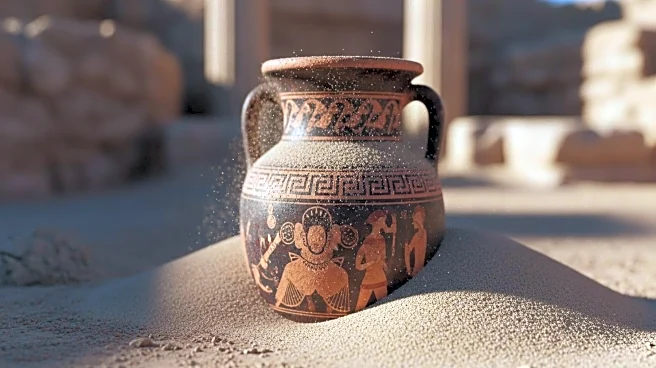What is the story about?
What's Happening?
The Parthenon temple in Athens, Greece, is now free of scaffolding for the first time in decades, offering visitors an unobstructed view of the historic site. The scaffolding, which was set up for conservation work on the temple's western façade about 20 years ago, has been removed. This marks the first time in approximately 200 years that the Parthenon's exterior is completely free of scaffolding. Culture Minister Lina Mendoni highlighted the significance of this development, noting that visitors can now experience the monument in a new way. However, conservation work is set to continue, with new scaffolding expected to be erected along the western side in about a month. This new scaffolding will be lighter and more aesthetically aligned with the monument's design. The ongoing conservation efforts are anticipated to last until early summer 2026, after which the Parthenon will be entirely free of scaffolding.
Why It's Important?
The removal of scaffolding from the Parthenon is significant for both cultural heritage and tourism. As Greece's most popular tourist site, the Acropolis attracts millions of visitors annually, and the unobstructed view enhances the visitor experience. This development underscores the importance of preserving historical monuments while balancing accessibility for tourists. The Parthenon, built in the mid-5th century B.C. to honor Athena, is a UNESCO World Heritage site and a symbol of ancient Greek civilization. The ongoing conservation work ensures the monument's structural integrity and aesthetic appeal, contributing to Greece's cultural legacy and tourism industry. The temporary removal of scaffolding also highlights the challenges of maintaining historical sites while accommodating public interest.
What's Next?
The next phase of conservation work on the Parthenon will involve the erection of new scaffolding along the western side, designed to be lighter and more in harmony with the monument's aesthetics. This phase is expected to last until early summer 2026, after which the Parthenon will be completely free of scaffolding. The continued conservation efforts are crucial for preserving the structural integrity and historical significance of the site. As the work progresses, stakeholders, including cultural heritage organizations and tourism operators, will likely monitor the impact on visitor numbers and experiences. The completion of the conservation work will be a milestone for Greece, enhancing the Parthenon's appeal as a cultural and historical landmark.
Beyond the Headlines
The restoration of the Parthenon without scaffolding offers deeper implications for cultural preservation and tourism management. It highlights the balance between maintaining historical integrity and providing public access to cultural sites. The aesthetic considerations in the new scaffolding design reflect a growing trend in heritage conservation to integrate modern techniques with historical authenticity. This approach may influence future conservation projects globally, emphasizing the importance of preserving cultural heritage while enhancing visitor experiences. Additionally, the Parthenon's restoration may inspire increased interest in ancient Greek history and architecture, contributing to educational and cultural initiatives.
AI Generated Content
Do you find this article useful?
